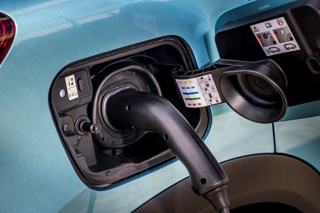An electric vehicle (EV) range test suggests that electric cars can travel up to 19 miles, on average, after their range readouts hit zero.
The research, from What Car?, put 10 of the latest fully electric models through a summer range test to see how far they would go in optimum conditions, with the contenders falling between 8.1% and 18.6% short of their official WLTP averages.
However, in each case the figure was helped by the car continuing to run for several miles after the instrumentation said there was nothing left in the battery, suggesting that range readouts are deliberately programmed to be conservative so that owners have an emergency buffer.
Of the cars tested, the BMW i4 eDrive40 M Sport went farthest on a charge and had the biggest buffer: 316 miles and 19 miles respectively.
Meanwhile, at the other end of the scale, the Cupra Born had the shortest summer range (219 miles) and the BMW iX3 the smallest emergency buffer (five miles).
Three of the cars were also involved in What Car?’s most recent winter range test, with the BMW iX3 M Sport Pro covering an extra 41 miles in summer, the Kia EV6 RWD GT-Line an extra 50 miles and the Tesla Model Y Long Range an extra 57 miles, giving an indication of how weather extremes can affect electric vehicle performance.
On average, the trio went 49 miles (21.4%) farther in the summer range test, when the air temperature ranged from 24-29deg C, than in winter, when it was 3-7deg C.
Previous research by What Car? found electric cars equipped with a heat pump lose less range when temperatures drop, with the heat pump drawing excess heat from the electric drivetrain and distributing it around the interior of the car through the air conditioning, reducing the strain on the battery.
What Car? editor Steve Huntingford said: “The fear of what will happen if you run out of charge in an electric car continues to put many people off making the switch, but our test showed that you not only get plenty of warning, but that even when the range readout hits zero, you’ve still got plenty of time to make it to a refuge area or find somewhere else safe to stop.”
The tests were conducted on a closed vehicle proving ground, on a 15-mile route consisting of 2.6 miles of simulated stop-start urban traffic, four miles of steady 50mph driving and eight miles driving at a constant speed of 70mph, to simulate motorway journeys.
Each of the 10 cars was fully charged and left outside for 15 hours, before being plugged in again to check the batteries were still at 100% for the start of the test.
They then had their climate control systems set to 21deg C and were driven until they ran flat, with driver swaps at the end of each circuit, and the cars’ positions also changed to ensure no car was constantly punching a hole in the air to improve aerodynamic efficiency for the others.
Range test results
| Model | Variant | Official range | Test range | Shortfall | Miles at zero | Efficiency |
| BMW i4 | eDrive40 M Sport | 345 miles | 316 miles | 8.2% | 19 miles | 3.9 miles/kWh |
| Tesla Model Y | Long Range | 331 miles | 304 miles | 8.1% | 11 miles | 4.1 miles/kWh |
| Tesla Model 3 | Long Range | 360 miles | 293 miles | 18.6% | 13 miles | 4.2 miles/kWh |
| Volkswagen ID 5 | Pro Performance Style | 315 miles | 281 miles | 10.5% | 15 miles | 3.7 miles/kWh |
| Kia EV6 | RWD GT-Line | 328 miles | 278 miles | 15.2% | 13 miles | 3.6 miles/kWh |
| BMW iX3 | M Sport Pro | 282 miles | 253 miles | 10.2% | 5 miles | 3.4 miles/kWh |
| Kia Niro EV | 4 | 285 miles | 253 miles | 10.9% | 17 miles | 3.9 miles/kWh |
| MG ZS EV | Long Range SE | 273 miles | 246 miles | 9.7% | 13 miles | 3.6 miles/kWh |
| Volvo XC40 | Recharge Single Motor Plus | 263 miles | 226 miles | 13.7% | 17 miles | 3.4 miles/kWh |
| Cupra Born | 58kWh V3 | 249 miles | 219 miles | 12% | 10 miles | 3.8 miles/kWh |






















Login to comment
Comments
No comments have been made yet.